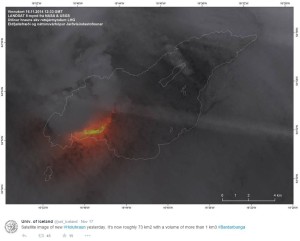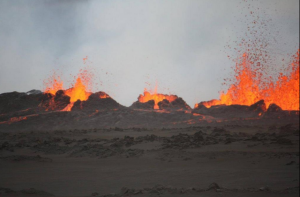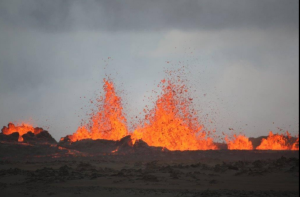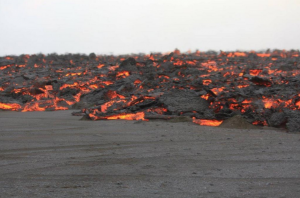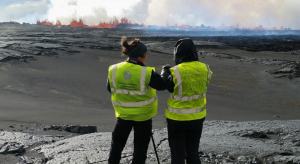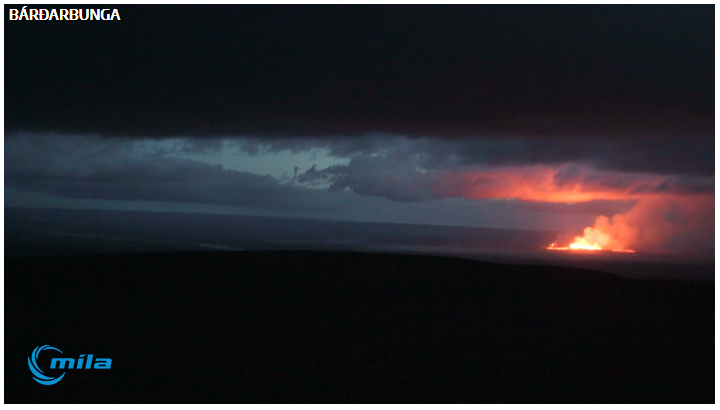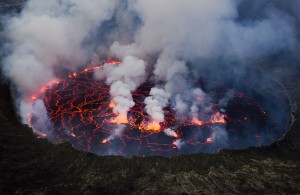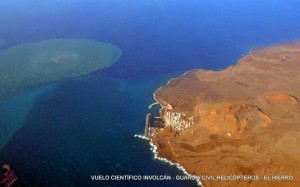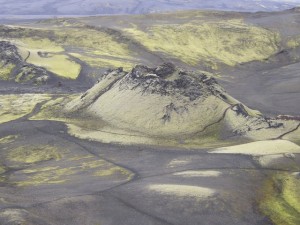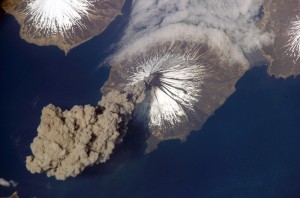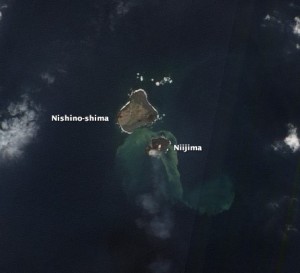After days of watching the subterranean dike gradually expanding north-eastwards from Bárðarbunga (a volcano under the Vatnajökull glacier in Iceland), today I woke to the news on the BBC (always my first port of call) that there had been an eruption there overnight. I headed straight over to my favourite volcano website, VolcanoCafé. I have been glued to it all day, and not getting too much work done. The eruption was along the line of a previous fissure eruption, part of the Holuhraun lavafield north of Dyngjujokull and south of the Askja caldera, which was formed in an effusive lava eruption in 1797. The eruption seems to have died down for now, but it seems almost certain there will be more to come. This stunning photo made my day:
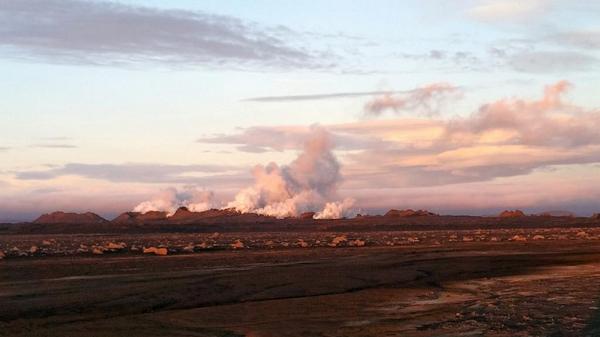
The eruption in the glorious early morning light in Iceland. The volcanic cones were formed during an eruption in 1797, and are now being added to by today’s eruption. Photo by Thorbjorg Agustsdottir.
It was taken this morning by Thorbjorg Agustsdottir (just before she went to bed as she had been up all night monitoring the eruption). She is a geophysicist at the University of Cambridge and is lucky enough to be currently working in the area. Her twitter feed has some great photos. I am so jealous of her!
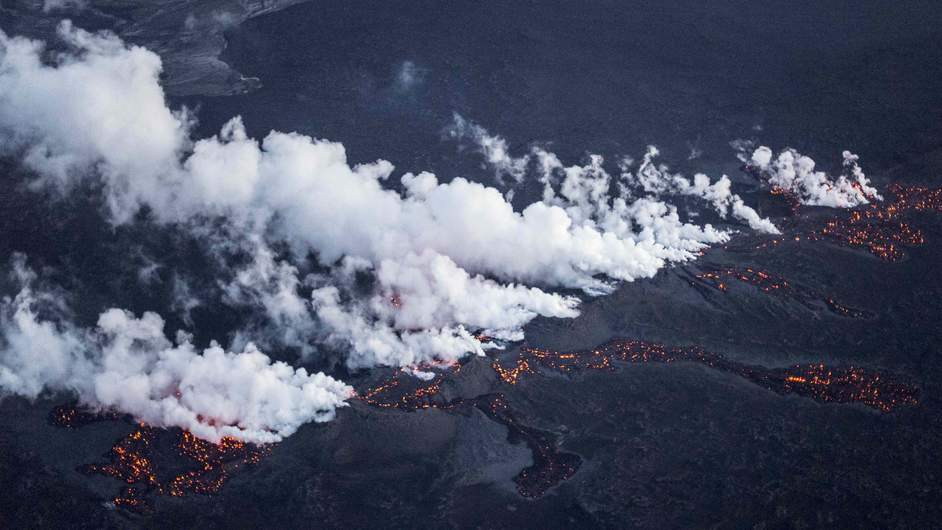
Aerial shot of lava flowing from the fissure, 29 August 2014. Photo: Reuters.
It seems the skies above the fissure have been busy today. Here’s a great low-level set of photos of the fissure and the tongues of lava that erupted. Other aerial shots of the fissure, taken this morning by Omar Ragnarsson and Hjalta Stefansson, a very intrepid pilot and his passenger, are equally stunning: https://www.youtube.com/watch?v=BxbIjFx6b4c
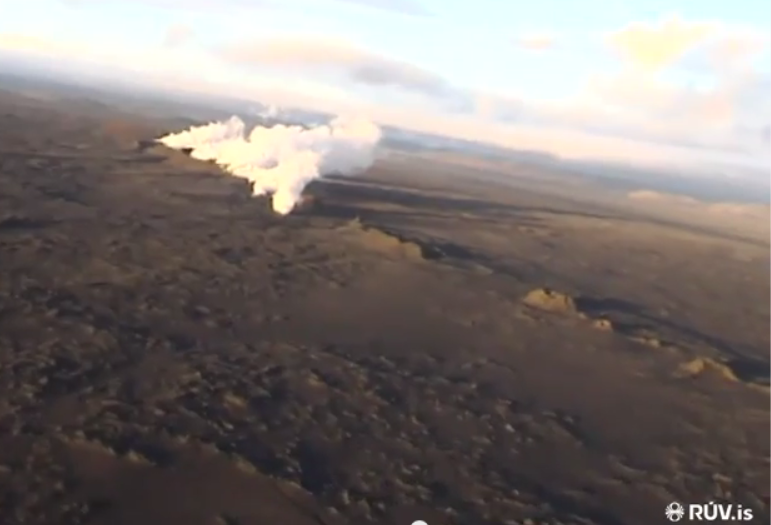
A still from the first video, showing the fissure line. Taken by Omar Ragnarsson and Hjalta Stefansson.
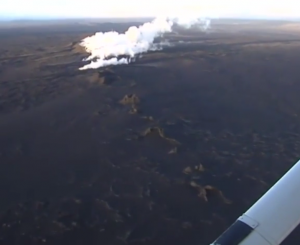
Another still from the first video, showing the fissure line. Taken by Omar Ragnarsson and Hjalta Stefansson.
I am very nostalgic because it reminds me of an area of the basalt desert in Jordan in which I worked in the 1980s, and in particular the Qiṭār el ‘Abd, a line of volcanic cones along a fissure:
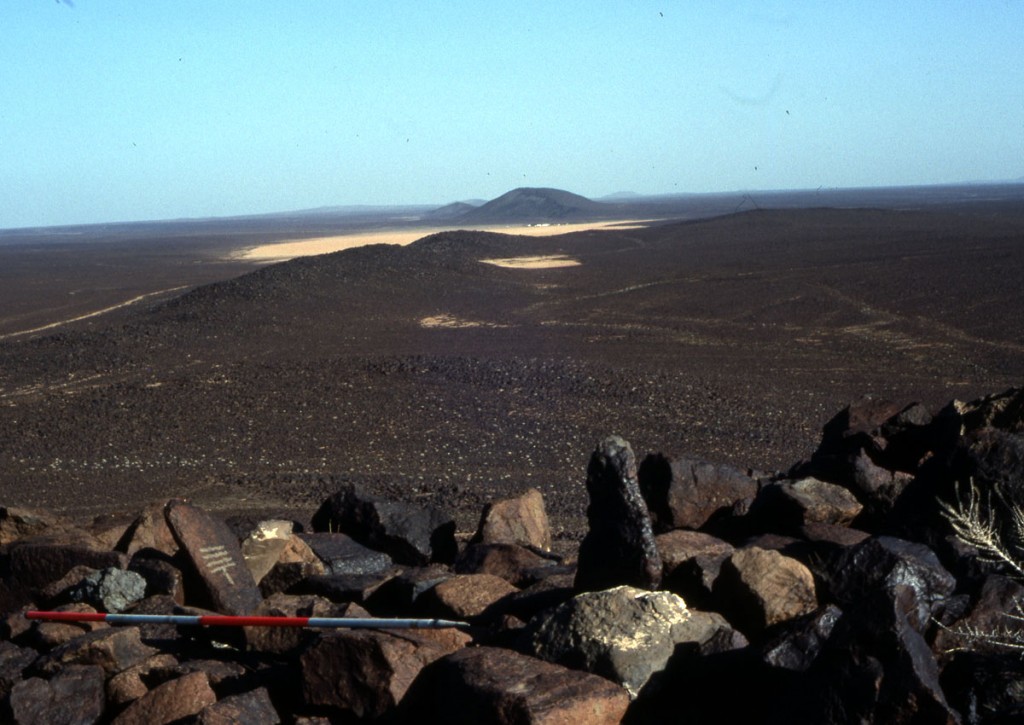
Part of the Qiṭār el ‘Abd, a fissure line of volcanic cones in eastern Jordan. Photo taken from the top of one of the peaks by me in 1989. The ranging rod is by a bedouin grave, with an upright headstone and footstone. The pecked design on the headstone is a wasm, a tribal mark.
The Qiṭār el ‘Abd runs NW-SE for about 100 km from just inside the Syrian border on the south-eastern side of Jebel al-Druze, the main volcano in the region, to the south-eastern edge of the basalt desert in the Jordanian panhandle. It looks on Google Earth like it forks at its southern end but I know nothing about it or the system that produced it, or its age. All I know is that it is a beautiful landscape feature. I absolutely adore basalt landscapes, and now I am feeling very happy-sad in my nostalgia. I had some of the best times ever in the basalt.
